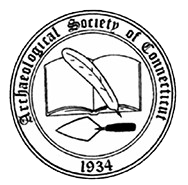This event begins the “Unearthing History: The Discovery of a 12,500 year old Paleo-Indian Site along the Farmington River in Avon, CT” webinar series II
Series created by the Avon Historical Society, Avon Free Library & Avon Senior Center
Sponsored by a grant from the Lower Farmington River and Salmon Brook Wild and Scenic Committee with funds from the National Park Service
Sponsored by a grant from the Lower Farmington River and Salmon Brook Wild
and Scenic Committee with funding from the National Park Service
The partnership of the Avon Historical Society, Avon Free Public Library and Avon Senior Center is pleased to present the first lecture in a second annual five-part webinar series “Unearthing History: The Discovery of a 12,500 year old Paleo-Indian Site along the Farmington River in Avon, CT.” The first lectured entitled “What Genetics Teaches Us About the Peopling of North America” will be presented by Dr. Jennifer Raff, anthropological geneticist at the University of Kansas. It will be held on Thursday, March 10 beginning at 7:00pm via Zoom through a link from the Library. It is available free of charge. Sign up at: www.avonctlibrary.info
Dr. Raff’s thesis focuses on the question how--and when--did people first come to the American continents? She states, “for many years, scientists thought these questions had a straightforward answer: the first peoples of the Americas journeyed from Siberia across the Bering Land Bridge at the end of the Last Glacial Maximum, swiftly dispersing across the continents about 13,000 years ago via an ice-free corridor that opened up as the glacial ice that covered northern North America melted. However, in the last two decades, this model has been shattered by archaeological evidence of people in the Americas thousands of years earlier. As researchers have worked to construct and test new models for the initial peopling of the Americas, they have increasingly incorporated evidence from the genomes of ancient peoples, which provide an archive of human population history. The picture that is slowly emerging is very complicated indeed.
In this talk, we will piece together a story told by fragments of DNA recovered from a tooth in Siberia, from the burials of children in Alaska and Montana, and from adults buried across North, Central, and South America. We’ll try to reconcile this DNA evidence with the stories revealed by a small broken knife found deep below the surface of a muddy pond in Florida and by the footprints of children left thousands of years ago on the banks of an ancient lake in New Mexico. We will explore why the same pieces of evidence tell different stories to different groups of scholars, how they align (or don’t) with the ancient knowledge held by present-day Indigenous descendants, and where the major gaps are currently in our understanding of the earliest peopling of the Americas.”
Dr. Raff studies genomes of contemporary humans and their ancestors for insights into prehistory with a focus on the initial peopling of North America. This presentation is based on her May 2021 Scientific American cover story “Journey into the Americas” and her new book, Origin: A Genetic History of the Americas being released Feb. 2022. Two copies of her new book will be given away at the end of the talk.
The “Unearthing History” series II, sponsored by a grant from the Lower Farmington River and Salmon Brook Wild and Scenic Committee, is being held in response to the 2019 excavation of a 12,500-year-old (10,000BC) Paleo-Indian site six feet below ground during a CT Department of Transportation construction project of the now completed bridge on Old Farms and Waterville Roads at Route 10 in Avon, CT. The survey uncovered more than 15,000 artifacts that are characteristic of the Early and Middle Paleo-Indian periods. The site is named for Brian D. Jones, the late Connecticut State Archaeologist, who led the effort to dig deep based on earlier excavations in the area over the past few decades. As of this writing, this site is considered the oldest archaeological site of its kind in the Northeast.
According to Dr. Lucianne Lavin of the Institute for American Indian Studies in Washington, CT, the last Ice Age in this region began to melt away about 17,500BP (Before the Present). As it receded, a lush new land was exposed that provided for animal life to return about 13,500BP in the form of tundra-grazing animals such as mastodons, mammoths, horses, giant beaver, caribou, and more. The ancient communities of the Paleo-Indians are thought to have begun to arrive in the northeast after that time in search of those animals for food. They were the first settlers of what is now Connecticut and southern New England. (Connecticut’s Indigenous Peoples, by Lucianne Lavin, 2013, Yale University Press)
Partners in this series include the Farmington River Watershed Association, Institute of American Indian Studies, Washington, CT and the Avon Land Trust. The second webinar entitled “Ice Age Animals of New England” will be held on Thursday, April 7 at 7:00pm. It will be presented by Dr. Sarah Sportman, Connecticut State Archaeologist & Dr. Nathaniel Kitchel, Dept. of Anthropology, Dartmouth. They will present the Pope Mastodon (found in Farmington on the grounds of Hill-Stead Museum) and the Mount Holly (VT) Mammoth, among other animals of the Ice Age.
To watch the webinars from the 2021 series on YouTube, visit: www.youtube.com/user/afplct
To register to attend this event, please visit: www.avonctlibrary.info




















